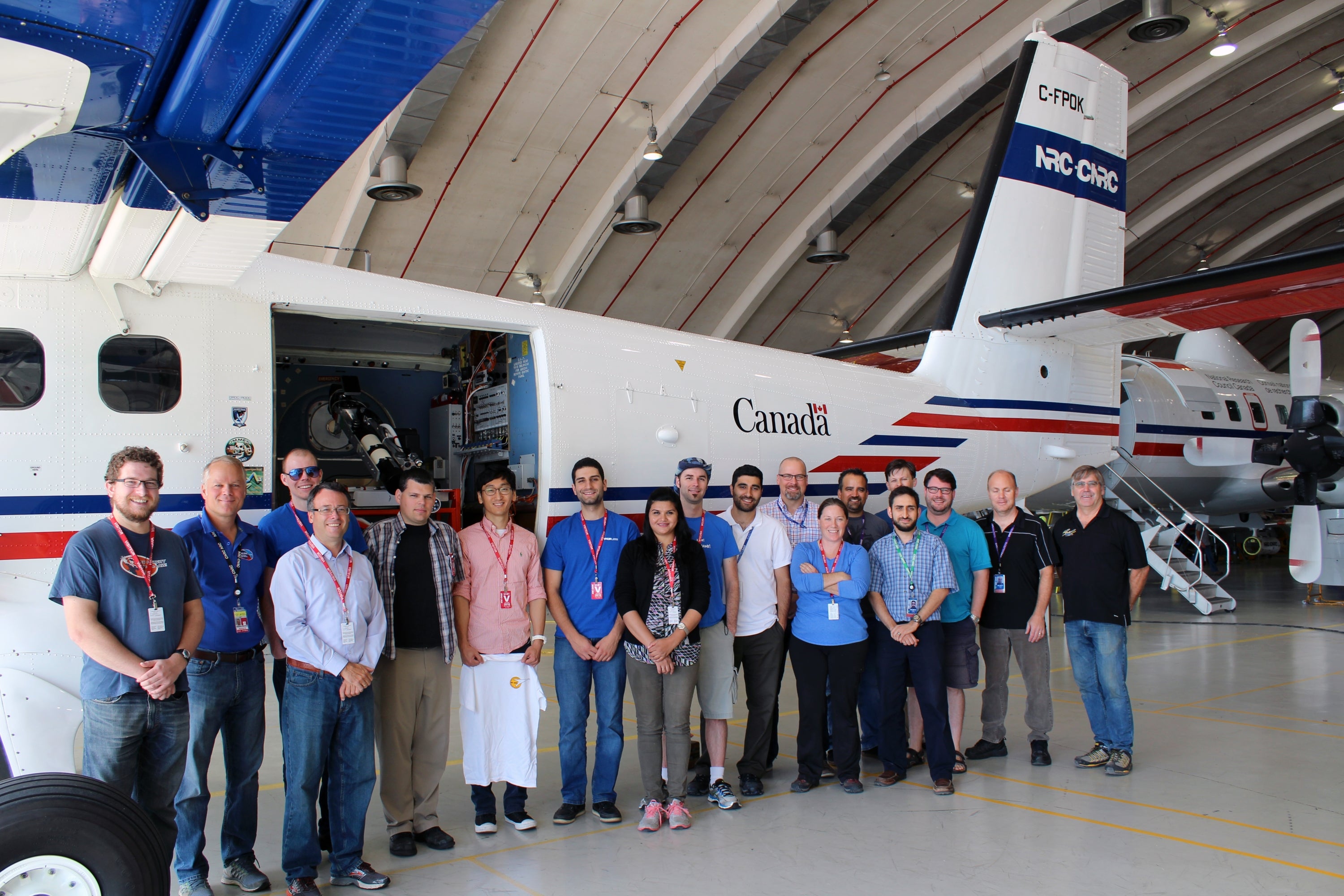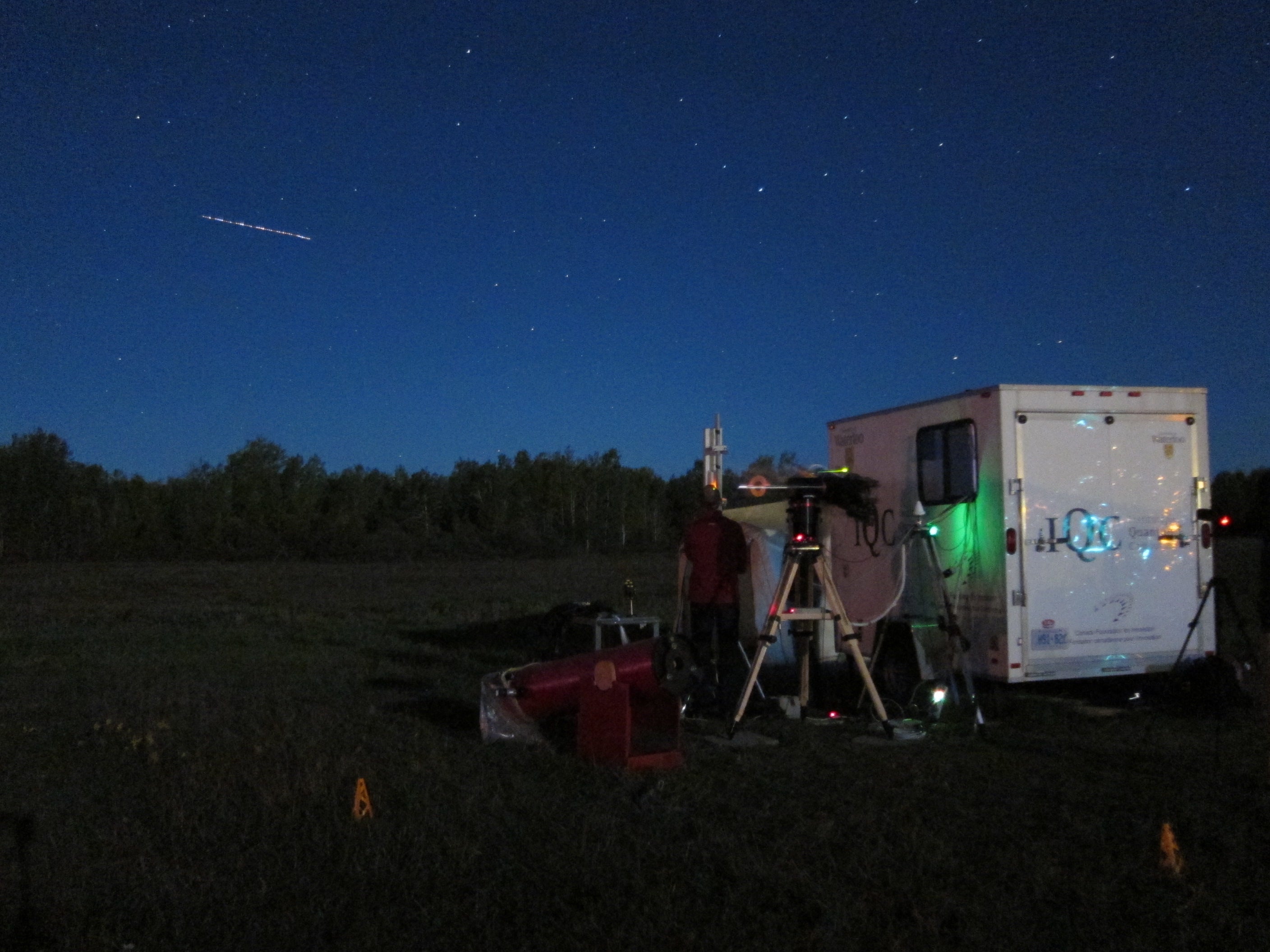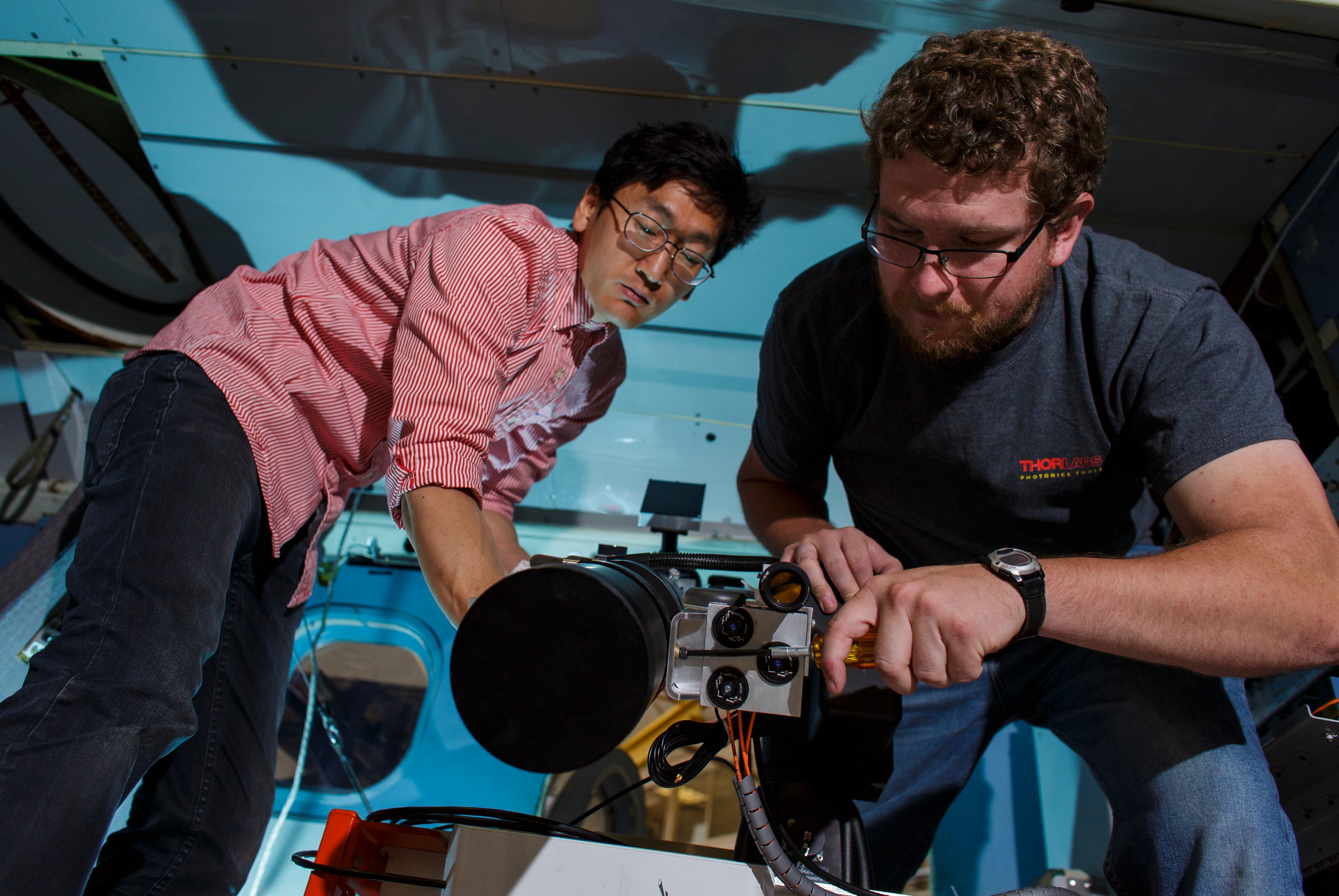A team led by Thomas Jennewein at the University of Waterloo’s Institute for Quantum Computing (IQC), supported by the National Research Council of Canada’s (NRC) Flight Research Laboratory, has successfully demonstrated quantum key distribution (QKD) between a transmitter on the ground and a receiver payload onboard an airplane. While researchers in Germany and China have previously conducted QKD experiments with quantum transmitters flown on an aircraft and a tethered low-altitude balloon, Jennewein’s team is the first to demonstrate a QKD link with an airborne quantum receiver.

The airborne quantum key distribution team stands in front of the NRC’s Twin Otter Airborne Research Aircraft that was used in the airborne experiment.
QKD can help with solving the challenge of securely transporting cryptographic keys between distant locations because it uses photons to establish a shared secret key. Since single photons behave according to the laws of quantum mechanics, they cannot be tapped, copied or directly measured without detection. Therefore, quantum key distribution can offer long-term data security because the security relies on the fundamental laws of physics, while current key exchange algorithms rely on difficult mathematical problems which one day may be broken by increases in computational power.
For this experiment, the ground-based transmitter infrastructure at Smiths Falls-Montague Airport sent photons to the quantum receiver passing by in the air. The receiver was aboard NRC’s Twin Otter Airborne Research Aircraft, based at the Flight Research Laboratory in Ottawa. The experienced NRC staff were able to quickly and safely integrate the equipment into the aircraft and conduct the unique flight test. The airborne system was designed and built under the leadership of Jennewein and his team, in collaboration with industry partners and the Canadian Space Agency (CSA) while the ground station system was designed and built by the team with support from the Canadian Innovation Fund and the Ontario Research Fund.

A secure uplink is created between the ground station and the airborne receiver as the NRC's Twin Otter Airborne Research Aircraft flies overhead.
“This successful demonstration of QKD with our receiver prototype on an airplane is the culmination of many years of hard work,” explains Jennewein, a faculty member with Waterloo’s Department of Physics and Astronomy. “The fine pointing mechanism of our airborne system was sufficient to allow stable QKD to be performed, while the angular speeds and disturbances of the receiver telescope and fluctuations of the laser beacons are similar to what we expect for a ground to satellite link operation.” In fact, both the airborne receiver and the transmitter on the ground performed so well that the team had to reduce the number of photons in the transmitted beam.
Several groups around the world are studying how to transmit photons over global distances. Jennewein has been strategically involved in shaping and advancing long-distance and satellite-based quantum communications technologies for over a decade. These most recent airborne experiments performed by the IQC team demonstrate the viability of the Canadian satellite mission concept Quantum Encryption and Science Satellite (QEYSSAt) and the payload prototype.
Since 2009 Jennewein has worked as the scientific principal investigator along with the CSA towards defining a Canadian Quantum Satellite mission, and developing, building and demonstrating the required systems. Funding for this demonstration was provided under the CSA Flights and Fieldwork for the Advancement of Science and Technology (FAST) program, which supports university research investigations that train highly qualified personnel (HQP) with the goal of building capacity and enabling future Canadian innovation, competitiveness and productivity.

IQC postdoctoral fellow Jeongwan Jin and PhD student Chris Pugh install the receiver payload into the aircraft. Photo credit: National Research Council Canada.
The airborne system is a functional prototype of the quantum satellite payload, specifically designed for the space environment, and was developed under previous CSA contracts in partnership with Institut National d’Optique (INO) in Québec City, the Neptec Design Group in Ottawa, Excelitas Canada Inc. in Montreal, Xiphos Systems Corporation in Montreal, and DotFast in Kufstein, Austria.
The results and technical details of the successful airborne QKD demonstration will be formally published in a peer-reviewed scientific journal.